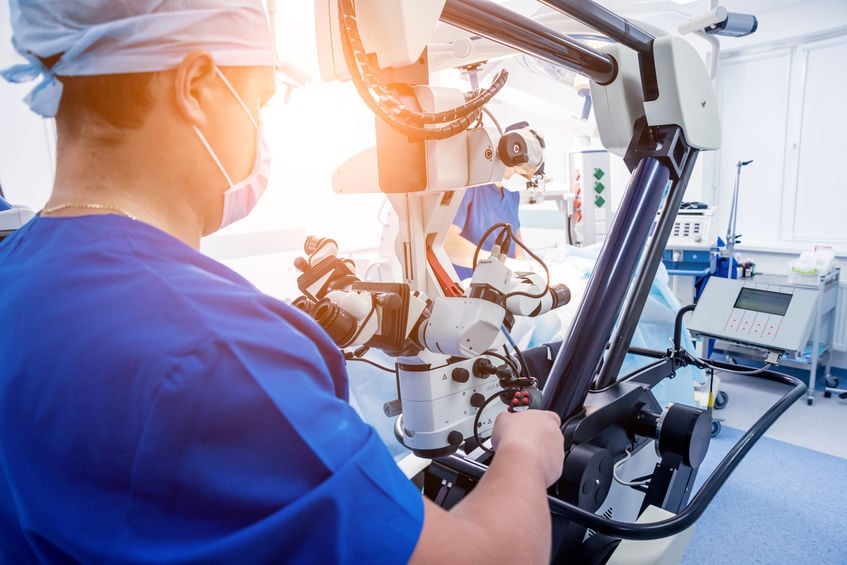Can Robots Help With Spine Surgery?
Artificial intelligence (AI) is not taking over surgeries. At least not yet, but what has been making waves is robotic assistance. A specific example of technology playing an assistive role is robotic lumbar spine surgery. During the procedure, sophisticated machines work harmoniously with skilled surgeons to enhance the precision and control of the operation. By utilizing robotics, surgeons can achieve unparalleled accuracy and perform delicate maneuvers that were once challenging to execute manually. This collaboration between human expertise and robotic assistance offers a remarkable fusion of skills, leading to superior surgical outcomes. Here are the 3 significant ways technology has transformed minimally invasive surgery (MIS), paving the way for a new era in spinal surgery.

1. Improved surgical planning and navigation
In the past, surgeons relied on basic imaging techniques such as x-rays and computerized tomography (CT) scans to understand the anatomy of the spine. However, the introduction of 3-D imaging and advanced software has revolutionized how surgeries are planned and executed. With robotics, surgeons can generate highly detailed 3-D models of the patient's spine. This process allows for precise pre-operative planning. Virtual models enable surgeons to simulate the procedure, analyze potential challenges, and determine the optimal approach. During surgery, robotic systems provide real-time navigation guidance, allowing surgeons to visualize the exact location of the instruments relative to the patient's anatomy. This level of accuracy significantly reduces the risk of complications and enhances the overall surgical experience.
2. Enhanced visualization and imaging
Advancements in imaging technology have played a pivotal role in transforming minimally invasive spine surgery. Robotic systems with high-definition cameras provide surgeons with enhanced surgical site visualization. Robotic spine surgery may even surpass what the naked eye can perceive. This heightened level of visualization allows surgeons to work through complex anatomical structures with greater ease and precision. Additionally, imaging techniques such as intraoperative fluoroscopy and augmented reality have improved visualization during robotic lumbar spine surgeries. Robotics can help surgeons monitor progress, improve the field of view, and provide valuable guidance throughout the surgery. This support allows even inexperienced surgeons to be more successful in performing spine surgeries.
3. Improved patient safety and recovery
Robotic lumbar spine surgery significantly improves patient safety and recovery. MIS using a scope already lowers risk, but robotics further enhances the process. Patients have smaller incisions, reduced tissue disruption, and decreased blood loss. Robotic systems have precise control and minimal invasiveness, leading to faster healing times and reduced post-operative pain. A quick recovery improves patients' overall well-being and quality of life.
Future of robotic spine surgery
The advancements achieved in robotic lumbar spine surgery are just the beginning. As technology continues to evolve, so will the possibilities in this field. Future upgrades will include incorporating AI and machine learning algorithms. Robotic arms and software will soon learn and adapt during surgeries. AI-powered systems may assist surgeons in making real-time decisions, improving the efficiency and effectiveness of procedures. Such advancements hold great promise for patients and surgeons.
More Articles from MVSC
April 15, 2024
Spinal surgery is an excellent solution for lower back pain, but symptoms can return. With lifestyle changes, patients can get the most out of fusion.
February 29, 2024
Rotator cuff tears can severely limit shoulder mobility. Surgery can relieve pain and improve mobility, allowing patients better reach.
January 15, 2024
Spinal conditions in the lower back may require a procedure called laminectomy. With MIS, patients have higher success rates.
December 21, 2023
Clavicle fractures are often treated non-surgically. The location and degree of damage can indicate whether collarbone surgery is needed.







